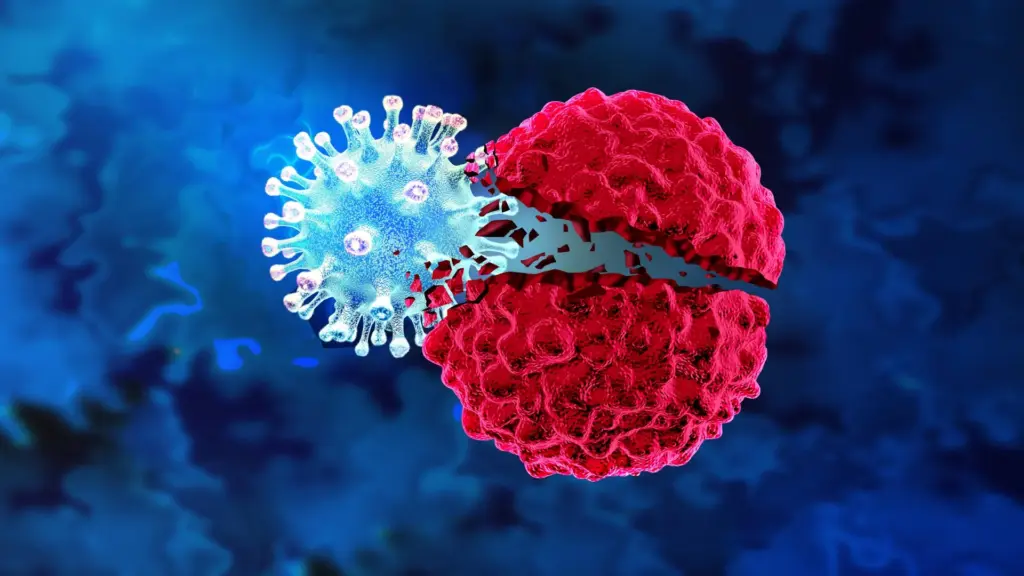The fight against cancer is constantly evolving, with scientists exploring innovative approaches to target and destroy cancerous cells. A groundbreaking new development combines the power of bacteria and viruses in a synergistic therapy that shows immense promise. This revolutionary approach, developed by researchers at Columbia Engineering and The Rockefeller University, offers a potentially safer and more effective way to combat various types of cancer.
This innovative treatment strategy utilizes a carefully engineered system called CAPPSID (Coordinated Activity of Prokaryote and Picornavirus for Safe Intracellular Delivery), which leverages the unique properties of both bacteria and viruses to attack tumors with unprecedented precision.
What Happened? 📝
Researchers have successfully created a novel cancer therapy system that combines the tumor-seeking abilities of Salmonella typhimurium bacteria with the cancer-killing capabilities of a specific virus. This dual-pronged attack allows for targeted delivery and enhanced destruction of tumor cells.
The bacteria act as a Trojan horse, carrying the virus directly into the tumor. Once inside, the bacteria release the virus, which then infects and kills cancer cells. This combined approach overcomes limitations faced by using either bacteria or viruses alone.
How Does CAPPSID Work? ⚙️
The genius of CAPPSID lies in its ingenious design. The Salmonella typhimurium bacteria, known for their natural tendency to accumulate in tumor sites due to the low-oxygen environment, serve as the delivery system. These bacteria are engineered to carry a specific oncolytic virus – a virus that selectively infects and destroys cancer cells.
Once the bacteria reach the tumor, they invade the cancer cells and release the virus. The virus then replicates within the cancer cells, leading to their destruction. This targeted approach minimizes harm to healthy cells.
Overcoming Immune System Challenges 💪
One significant hurdle in oncolytic virus therapy is the body’s immune response. Pre-existing antibodies against the virus can neutralize it before it reaches the tumor. CAPPSID cleverly circumvents this by using the bacteria as a protective “invisibility cloak”.
The bacteria shield the virus from the immune system, ensuring its safe delivery to the tumor site. This is particularly crucial for viruses that people might already have antibodies against due to previous infections or vaccinations.
Ensuring Safety: A Crucial Aspect 🛡️
A major concern with any live virus therapy is the risk of uncontrolled viral spread beyond the tumor. The researchers addressed this concern by ingeniously engineering the virus to require a specific molecule (a protease) produced only by the bacteria for replication.
This molecular safeguard prevents the virus from spreading outside the tumor microenvironment, where the bacteria are present. Even if the virus escapes, it cannot replicate in healthy tissues, significantly enhancing the safety profile of this therapy.
Targeting the Tumor Precisely 🎯
The system expertly exploits the natural properties of both components. The bacteria’s inherent ability to home in on tumors, combined with the virus’s capacity to replicate within and destroy cancer cells, creates a highly effective delivery and destruction mechanism.
This combined approach surpasses the limitations of using either bacteria or viruses alone, offering a more comprehensive and potent approach to cancer treatment. The ability to penetrate and spread throughout the tumor is a significant advancement.
Key Takeaways 🔑
- CAPPSID, a novel cancer therapy, combines bacteria and viruses for targeted tumor destruction.
- Bacteria act as a delivery system, shielding the virus from the immune system and transporting it to the tumor.
- The virus replicates within cancer cells, leading to their destruction.
- A molecular safeguard prevents the virus from spreading uncontrollably beyond the tumor.
- This approach shows significant promise for treating various cancers and is currently undergoing further testing and clinical translation.
The development of CAPPSID represents a monumental leap forward, joining other recent breakthroughs like the research into novel mitochondrial therapies for lung cancer. The innovative combination of bacterial and viral properties offers a promising new strategy to combat this devastating disease. With ongoing research and clinical trials, this technology has the potential to revolutionize cancer treatment and significantly improve patient outcomes.
Source: Trojan horse bacteria sneak cancer-killing viruses into tumors



